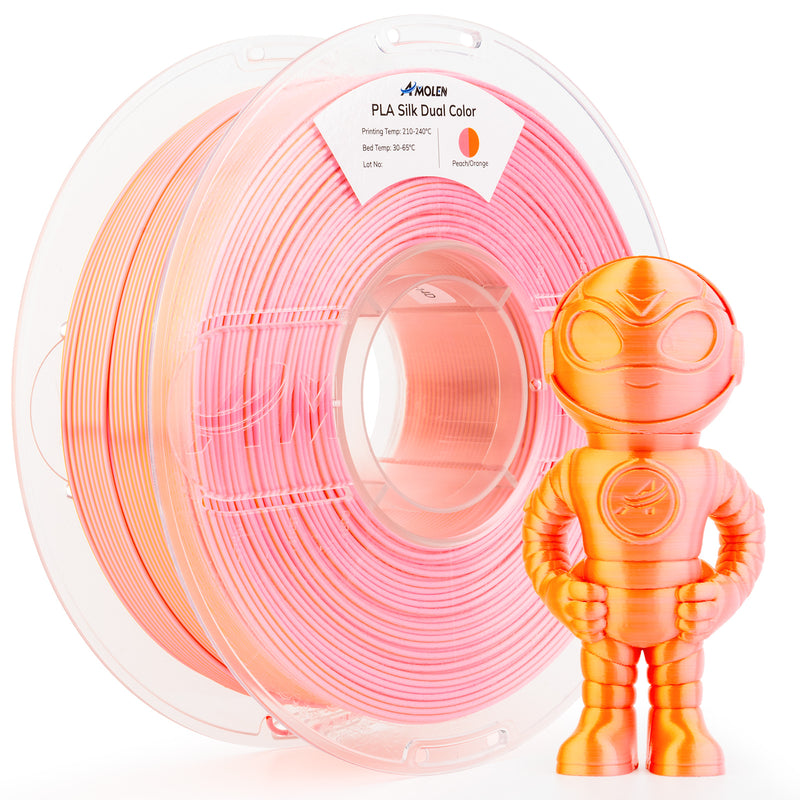Unlock the Secrets of PLA 3D Printer Filament: Why It's the Game-Changer You Need!
In the world of 3D printing, PLA (Polylactic Acid) has emerged as a favorite among enthusiasts and professionals alike. This biodegradable thermoplastic, derived from renewable resources like corn starch or sugarcane, is celebrated for its user-friendly nature and environmental benefits. As the 3D printing community continues to grow, understanding PLA and its unique characteristics becomes essential for anyone looking to dive into this innovative domain. In this article, we will explore the properties, advantages, and applications of PLA 3D printer filament, shedding light on why it is a game-changer for your 3D printing projects.

Understanding PLA 3D Printer Filament
PLA filament is a type of thermoplastic filament used in 3D printing that is made from the polymerization of lactic acid. This process involves converting renewable resources such as cornstarch into a material that is not only easy to print but also environmentally friendly. One of the most attractive features of PLA is its biodegradability, meaning it can break down naturally over time, unlike many other plastics that can persist in landfills for hundreds of years. This characteristic makes PLA a popular choice for eco-conscious consumers and businesses striving to reduce their environmental footprint. Moreover, the production of PLA generates lower carbon emissions compared to traditional petroleum-based plastics, further enhancing its appeal in the 3D printing community.
Properties of PLA Filament
PLA filament boasts several key properties that make it an ideal choice for 3D printing. One of its standout features is its strength; while it is not as strong as some other materials, it provides adequate durability for most applications. Additionally, PLA is known for its excellent printability, which means it adheres well to the print bed and has minimal warping. This is particularly beneficial for beginners, as it reduces the likelihood of failed prints. The melting point of PLA typically hovers around 180-220°C, allowing it to be printed at lower temperatures compared to other filaments like ABS. Its flexibility is moderate, which gives it a good balance between rigidity and bendability. These characteristics make PLA filament a go-to option for various projects, whether you're creating intricate designs or functional prototypes.
Advantages of Using PLA Filament
Using PLA filament for 3D printing comes with numerous advantages that cater to both novice and experienced users. One of the most significant benefits is its low tendency to warp during the printing process, which means you can achieve better print quality with less frustration. Additionally, PLA is available in a vast array of vibrant colors, enabling creators to express their artistic vision without limitations. Its versatility allows it to be used in various fields, including prototyping, education, and DIY home projects. Friends of mine who are educators have shared how PLA filament has transformed their classrooms, allowing students to engage in hands-on learning through 3D printing. The ease of use and safety of PLA, which emits a sweet smell during printing, makes it a great choice for educational environments where kids are involved.
Common Applications of PLA Filament
PLA filament is widely used across various applications due to its unique properties. For instance, hobbyists often use PLA to create detailed models and prototypes, taking advantage of its ease of printing and vibrant colors. The toy industry has also embraced PLA, producing safe and fun items for children. In the medical field, PLA is utilized in the manufacturing of models for educational purposes and even in some biodegradable medical devices. Artists and designers commonly choose PLA for their creative projects, as its aesthetic appeal and easy printability allow for intricate designs. The versatility of PLA filament showcases its suitability for a broad range of applications, making it an essential material in the 3D printing toolkit.
Key Takeaways on PLA Filament
In summary, PLA 3D printer filament stands out as a remarkable material in the realm of 3D printing. Its biodegradability, ease of use, and wide range of applications make it a preferred choice for both beginners and seasoned professionals. The advantages of PLA, from low warping to vibrant color options, highlight why it has become a game-changer in the industry. Whether you're looking to create prototypes, educational tools, or artistic masterpieces, PLA filament should be at the forefront of your 3D printing projects. Embrace the potential of PLA and elevate your 3D printing experience today!








